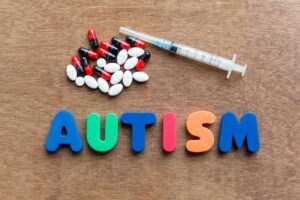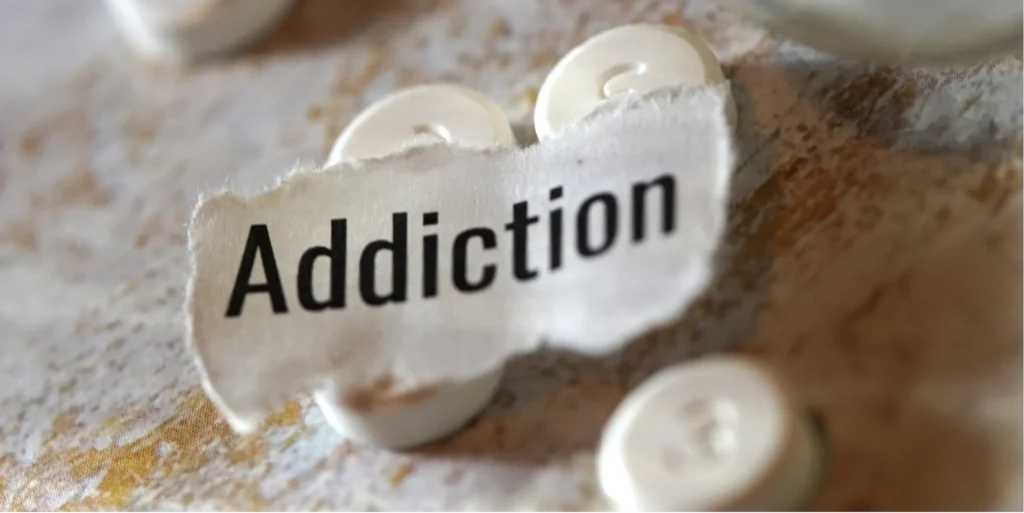Autism Spectrum Disorder (ASD) affects millions of individuals across the globe, influencing their social interactions, communication, and behavior in unique ways. When substance abuse enters the equation, the challenges and solutions become more complex. This blog aims to shed light on the prevalence of autism and substance abuse, exploring underlying causes, potential risks, and effective strategies for prevention and treatment.
Contents
Can Autism Lead To Substance Abuse?
 Autism itself does not directly lead to substance abuse, but individuals with Autism Spectrum Disorder (ASD) may face a range of challenges and experiences that can increase their risk of developing substance abuse issues. For instance, many individuals with autism struggle with social communication and interaction. This can lead to feelings of isolation, anxiety, and depression.
Autism itself does not directly lead to substance abuse, but individuals with Autism Spectrum Disorder (ASD) may face a range of challenges and experiences that can increase their risk of developing substance abuse issues. For instance, many individuals with autism struggle with social communication and interaction. This can lead to feelings of isolation, anxiety, and depression.
These emotional challenges, when not properly addressed, might push some towards substance use as a coping mechanism. Moreover, the sensory processing differences that many individuals with autism experience can make them more sensitive to their environments. This heightened sensitivity can lead to increased stress and discomfort.
It is also important to consider that those with ASD might not receive adequate social training about the risks associated with substance use due to communication barriers or assumptions about their social experiences. Thus, tailored preventive measures and interventions are crucial to address the unique needs of those with autism.
What Substances Are Linked To Autism?
There are no substances that are linked to causing autism itself, as Autism Spectrum Disorder (ASD) is primarily understood to be a developmental disorder with genetic and environmental origins. However, there are certain substances whose exposure during pregnancy is associated with an increased risk of the child developing autism.
Substances Linked to Increased Autism Risk
- Pesticides: Exposure to certain pesticides during pregnancy has been linked to a higher risk of autism. Studies suggest that the chemicals in these pesticides may affect brain development in fetuses.
- Phthalates: These chemicals, used to make plastics more flexible, are found in a wide range of products, including cosmetics, toys, and food packaging. Exposure to phthalates during pregnancy is associated with a higher risk of autism-related traits in children.
- Air Pollutants: Exposure to air pollutants, especially during pregnancy, has been linked to a higher risk of having a child with autism. This includes pollutants like nitrogen dioxide and particulate matter.
- Valproic Acid: This medication, used to treat epilepsy and other neurological disorders, is strongly associated with an increased risk of autism when taken during pregnancy.
- Alcohol: Maternal alcohol consumption during pregnancy can lead to Fetal Alcohol Spectrum Disorders. This shares some behavioral and cognitive impairments with autism.
It’s important to note that while exposure to these substances can increase the risk, it does not guarantee that a child will develop autism. Autism is a complex disorder with multiple contributing factors.
What Are the Risks Of Autism And Substance Abuse?
 Combining autism and substance abuse presents a range of specific risks that can complicate the lives of those affected and their support networks. Here are some of the key risks associated with this intersection:
Combining autism and substance abuse presents a range of specific risks that can complicate the lives of those affected and their support networks. Here are some of the key risks associated with this intersection:
- Increased Vulnerability to Addiction
Individuals with autism may be more susceptible to developing an addiction due to a variety of factors, including a tendency towards repetitive behaviors and routines, which can include substance use. They might also use substances to self-medicate for issues like anxiety, depression, or sensory overload.
- Difficulties in Social Situations
Substance abuse can exacerbate the social challenges that individuals with autism already face. Alcohol and drugs can impair judgment, exacerbate behavioral issues, and decrease the ability to recognize social cues. All of which can lead to further social isolation and misunderstandings.
- Heightened Health Risks
Individuals with autism often have co-occurring health issues. This might be worsened by substance abuse. For example, epilepsy is more common in autistic individuals, and substance use can increase the frequency and severity of seizures. Additionally, certain substances might interact negatively with medications prescribed for autism-related conditions.
- Challenges in Diagnosis and Treatment
Symptoms of substance abuse can overlap with behavioral characteristics of autism, such as changes in behavior or mood swings, making it difficult for healthcare providers to accurately diagnose and treat substance abuse in this population. This can lead to under-treatment or mismanagement of either condition.
- Limited Access to Suitable Treatment Programs
There is a lack of addiction treatment programs specifically tailored to the needs of individuals with autism. This can result in inadequate support and care. Because traditional substance abuse programs might not be equipped to address the unique needs of someone on the autism spectrum, including sensory sensitivities and communication difficulties.
Addressing these risks requires a multi-disciplinary approach involving tailored interventions that consider both autism and substance abuse. Also, supportive measures that can effectively meet the specific needs of this group.
What Is The Autism And Substance Abuse Treatment?
 Treating autism and substance abuse requires a specialized approach. It considers both the unique challenges of autism spectrum disorder (ASD) and the complexities of addiction.
Treating autism and substance abuse requires a specialized approach. It considers both the unique challenges of autism spectrum disorder (ASD) and the complexities of addiction.
Medical Approaches
Here are some key components of effective treatment strategies for individuals facing both conditions:
Integrated Treatment Plans
It is essential to integrate services that address both autism and substance abuse. This may involve a team of specialists, including psychiatrists, psychologists, addiction counselors, and occupational therapists. They understand both ASD and substance abuse disorders. Tailored treatment plans should consider the individual’s sensory sensitivities, communication difficulties, and the need for structured routines, all common in autism.
Behavioral Therapies
Cognitive Behavioral Therapy (CBT) can be adapted for those with ASD to help them understand the connection between their thoughts, feelings, and behaviors, particularly with substance use. Social skills training can also be incorporated to improve interpersonal relations and reduce social anxiety. It is often a trigger for substance use.
Medication Management
Some individuals may benefit from medications that address specific symptoms associated with autism (such as anxiety or hyperactivity) or that are used in the treatment of addiction (like those used for managing withdrawal symptoms or maintaining abstinence). Any medication regimen must be closely monitored by healthcare providers familiar with the interactions between medications used for ASD and those used for addiction.
Family Involvement
Involving family members in the treatment process can be incredibly beneficial. Family therapy can help improve communication and provide relatives with strategies to support their loved one’s recovery. It also equips families with tools to handle challenges that arise from both autism and substance abuse.
Support Groups
Participating in support groups can provide a sense of community and belonging, reducing feelings of isolation. These groups must be sensitive to the needs of those with ASD. Potentially requiring adjustments or the creation of specialized groups that cater specifically to individuals with autism.
Vocational Training and Support
Programs that include vocational training and support can help individuals with autism find and maintain employment. And, fostering a sense of purpose and routine that can be protective against substance abuse.
Sensory Integration Therapies
Given that sensory processing issues are common in individuals with autism, incorporating sensory integration therapies can help manage sensory sensitivities and reduce the need for self-medication through substance use.
Ongoing Monitoring and Adjustment
Treatment plans should be regularly reviewed and adjusted based on the individual’s progress and any changes in their needs. This continuous evaluation helps ensure that the interventions remain effective and responsive to the individual’s condition.
Effective treatment for autism and substance abuse is highly personalized, requiring a deep understanding of both conditions. It involves addressing the substance abuse itself. Also, building life skills and supports that address the broader aspects of living with autism.
How Can I Prevent This Co-occurring Condition?
 Preventing substance abuse in individuals with autism involves proactive strategies. This addresses the unique vulnerabilities of those with ASD. Here are some practical points for prevention:
Preventing substance abuse in individuals with autism involves proactive strategies. This addresses the unique vulnerabilities of those with ASD. Here are some practical points for prevention:
- Early Intervention for ASD: Implementing early intervention strategies for autism can help improve communication skills, social interactions, and coping mechanisms. Ultimately, reducing the risk of later substance abuse.
- Educate on Substance Risks: Educate individuals with autism about the effects and risks of substance use. And, using clear and concrete language that they can understand.
- Social Skills Training: Enhance social skills to reduce feelings of isolation or social anxiety that might lead to substance use as a form of self-medication.
- Routine and Structure: Maintain a structured daily routine that includes healthy activities, reducing the likelihood of substance use as a coping mechanism for boredom or stress.
- Monitor Mental Health: Regularly assess and address co-occurring mental health issues like anxiety or depression, which can increase the risk of substance abuse.
- Tailored Support Programs: Develop or participate in support programs specifically designed for individuals with ASD, focusing on building resilience and life skills.
- Family and Caregiver Support: Engage families and caregivers in understanding the risks of substance abuse and provide them with strategies to support the individual with autism.
- Professional Guidance: Consult with healthcare professionals who specialize in autism to tailor prevention strategies to the individual’s specific needs.
- Safe and Inclusive Activities: Encourage participation in hobbies and social activities that promote a sense of community and belonging without exposing individuals to environments where substance use is prevalent.
- Legal and Ethical Education: Teach individuals with autism about the legal and ethical implications of substance use to ensure they understand the consequences of their actions.
By implementing these prevention strategies, you can help mitigate the risk of substance abuse in individuals with autism, supporting them to lead healthier and more fulfilling lives.
Conclusion
In conclusion, understanding the complex relationship between autism and substance abuse is crucial for providing effective support and care. Individuals with autism may face unique challenges that increase their risk of substance abuse. Further, necessitates tailored approaches to both prevention and treatment.
Families, caregivers, and professionals need to work together to create a supportive environment that addresses the needs of autism and substance abuse. Ultimately, ensures they have the resources and strategies needed to lead safe and fulfilling lives.
